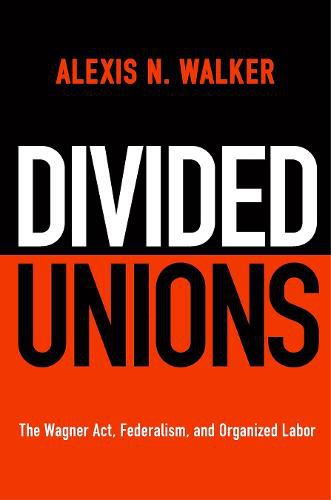Readings Newsletter
Become a Readings Member to make your shopping experience even easier.
Sign in or sign up for free!
You’re not far away from qualifying for FREE standard shipping within Australia
You’ve qualified for FREE standard shipping within Australia
The cart is loading…






A comparative history of public and private sector unions from the Wagner Act of 1935 until today
The 2011 battle in Wisconsin over public sector employees’ collective bargaining rights occasioned the largest protests in the state since the Vietnam War. Protestors occupied the state capitol building for days and staged massive rallies in downtown Madison, receiving international news coverage. Despite an unprecedented effort to oppose Governor Scott Walker’s bill, Act 10 was signed into law on March 11, 2011, stripping public sector employees of many of their collective bargaining rights and hobbling government unions in Wisconsin. By situating the events of 2011 within the larger history of public sector unionism, Alexis N. Walker demonstrates how the passage of Act 10 in Wisconsin was not an exceptional moment, but rather the culmination of events that began over eighty years ago with the passage of the Wagner Act in 1935.
Although explicitly about government unions, Walker’s book argues that the fates of public and private sector unions are inextricably linked. She contends that the exclusion of public sector employees from the foundation of private sector labor law, the Wagner Act, firmly situated private sector law at the national level, while relegating public sector employees’ efforts to gain collective bargaining rights to the state and local levels. She shows how private sector unions benefited tremendously from the national-level protections in the law while, in contrast, public sector employees’ efforts progressed slowly, were limited to union-friendly states, and the collective bargaining rights that they finally did obtain were highly unequal and vulnerable to retrenchment. As a result, public and private sector unions peaked at different times, preventing a large, unified labor movement. The legacy of the Wagner Act, according to Walker, is that labor remains geographically concentrated, divided by sector, and hobbled in its efforts to represent working Americans politically in today’s era of rising economic inequality.
$9.00 standard shipping within Australia
FREE standard shipping within Australia for orders over $100.00
Express & International shipping calculated at checkout
A comparative history of public and private sector unions from the Wagner Act of 1935 until today
The 2011 battle in Wisconsin over public sector employees’ collective bargaining rights occasioned the largest protests in the state since the Vietnam War. Protestors occupied the state capitol building for days and staged massive rallies in downtown Madison, receiving international news coverage. Despite an unprecedented effort to oppose Governor Scott Walker’s bill, Act 10 was signed into law on March 11, 2011, stripping public sector employees of many of their collective bargaining rights and hobbling government unions in Wisconsin. By situating the events of 2011 within the larger history of public sector unionism, Alexis N. Walker demonstrates how the passage of Act 10 in Wisconsin was not an exceptional moment, but rather the culmination of events that began over eighty years ago with the passage of the Wagner Act in 1935.
Although explicitly about government unions, Walker’s book argues that the fates of public and private sector unions are inextricably linked. She contends that the exclusion of public sector employees from the foundation of private sector labor law, the Wagner Act, firmly situated private sector law at the national level, while relegating public sector employees’ efforts to gain collective bargaining rights to the state and local levels. She shows how private sector unions benefited tremendously from the national-level protections in the law while, in contrast, public sector employees’ efforts progressed slowly, were limited to union-friendly states, and the collective bargaining rights that they finally did obtain were highly unequal and vulnerable to retrenchment. As a result, public and private sector unions peaked at different times, preventing a large, unified labor movement. The legacy of the Wagner Act, according to Walker, is that labor remains geographically concentrated, divided by sector, and hobbled in its efforts to represent working Americans politically in today’s era of rising economic inequality.